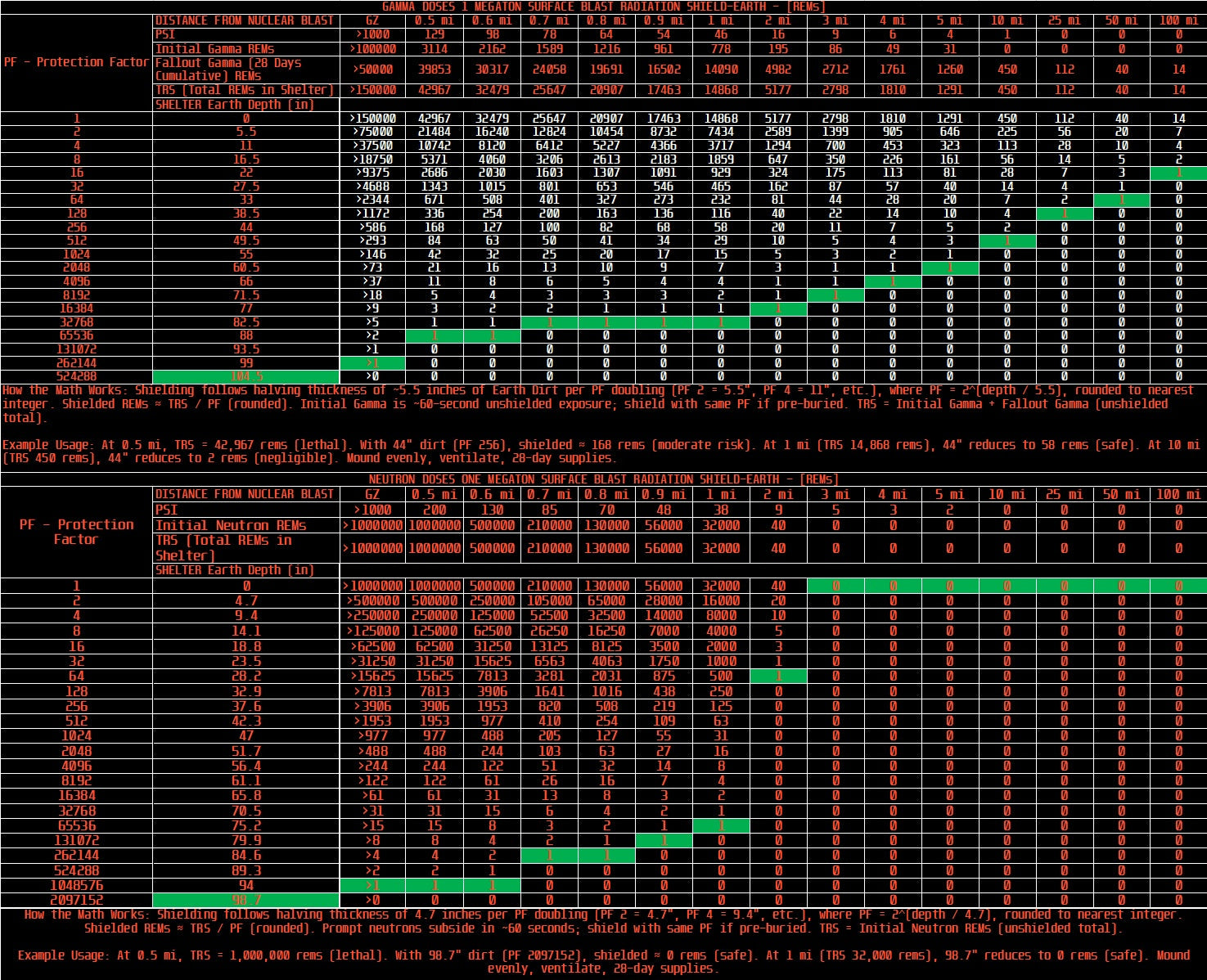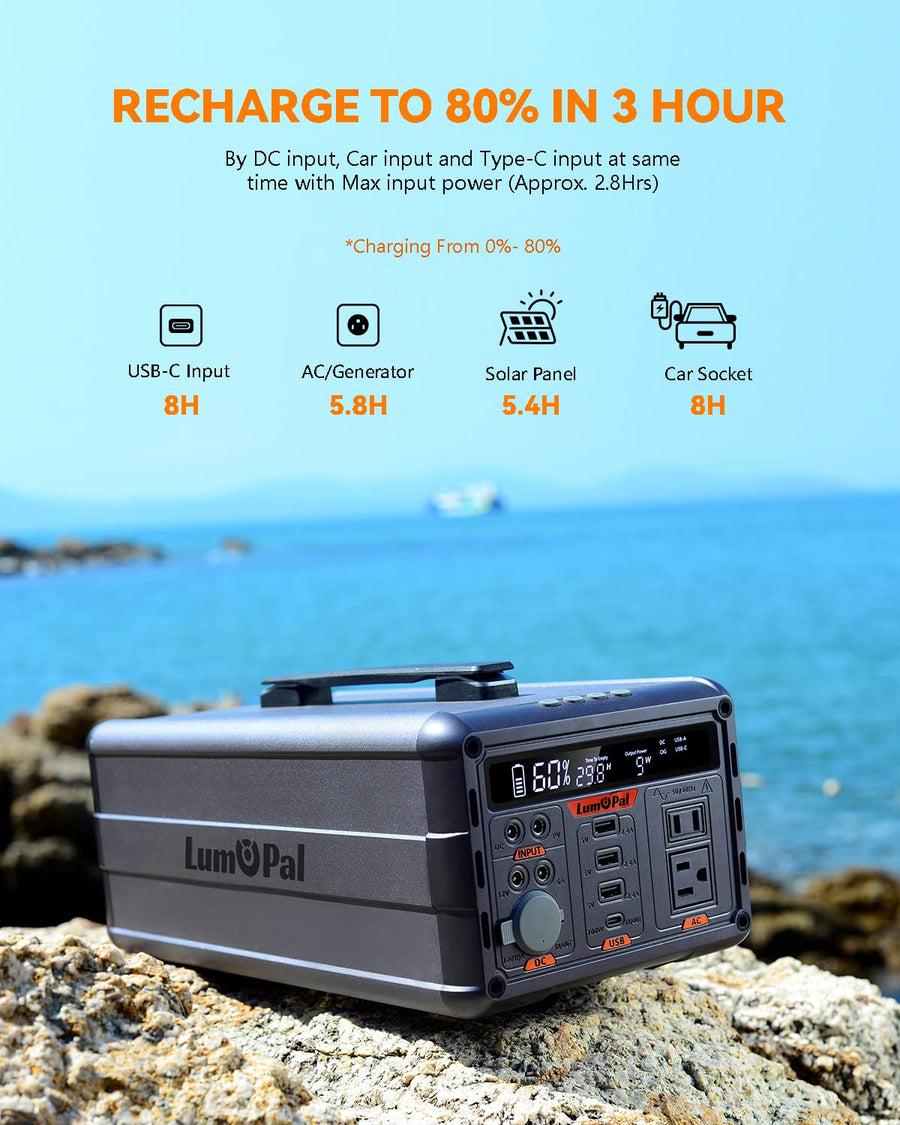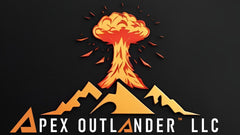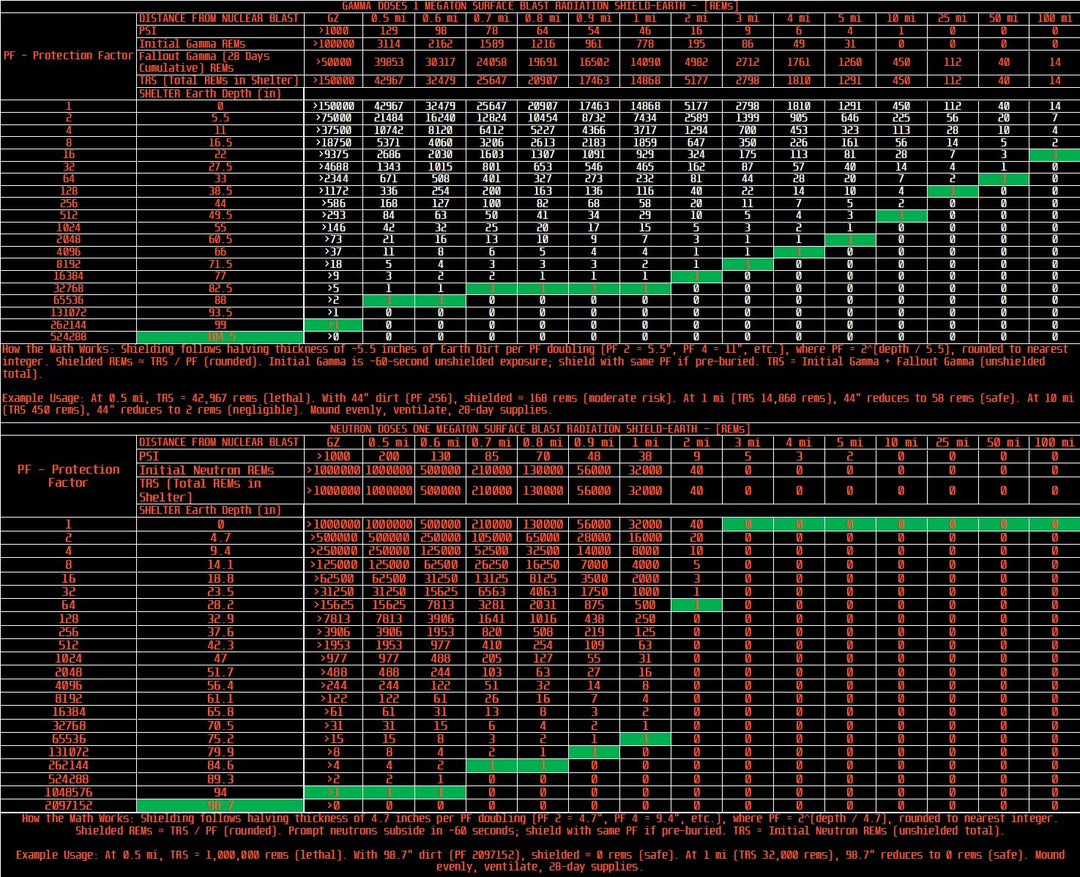Radiation Doses for 1 Megaton Surface Blast and Radiation Shield Requirements

Understanding Nuclear Fallout: Radiation Doses and Shelter Protection for a 1-Megaton Surface Burst
By Apex Outlander Team
Published: October 5, 2025
In an increasingly uncertain world, preparing for extreme scenarios like a nuclear detonation is not about fear—it's about empowerment. At Apex Outlander, we specialize in advanced fallout shelters designed with aerospace-grade techniques to maximize safety, attenuate radiation, and withstand blasts. Our shelters go beyond basic dirt mounds, incorporating engineered materials, ventilation systems, and structural integrity to protect your family. This blog post, styled as an informative paper, breaks down the dangers of radiation from a hypothetical 1-megaton (1MT) surface burst nuclear detonation. We'll cover the types of radiation, step-by-step calculations for doses, data sources, and how effective shielding (like earth or advanced designs) can mitigate risks. The goal is to help you make informed decisions for your family's protection.
We'll draw from reliable scientific sources to ensure accuracy, focusing on realistic estimates rather than overstated worst-case scenarios. By understanding the math and physics, you'll see why proper sheltering is essential—and how Apex Outlander's products take safety to the maximum.
Section 1: The Scenario and Radiation Types
A 1MT surface burst detonation involves a nuclear device exploding on or near the ground, creating a massive fireball that irradiates soil and debris, leading to heavy fallout. Unlike air bursts, surface bursts produce more local contamination but less widespread initial radiation due to ground absorption.
Key radiation types:
- Initial Gamma Radiation: High-energy photons released in the first ~60 seconds from the fireball. Subsides quickly but lethal close-in.
- Fallout Gamma Radiation (28 Days Cumulative): Gamma rays from settled radioactive particles decaying over time. This is the long-term threat, peaking in the first days.
- Initial Neutron Radiation: High-speed particles released in ~60 seconds, penetrating but attenuated faster by shielding than gamma.
Doses are measured in REMs (Roentgen Equivalent Man), where ~450 REMs is lethal without treatment, ~100 REMs causes sickness, and <50 REMs is generally safe with minimal long-term risk.
Data comes from "The Effects of Nuclear Weapons" by Samuel Glasstone and Philip J. Dolan (1977, U.S. DoD/ERDA), a test-based reference. Values are calculated using scaling laws from this source, verified against tools like NUKEMAP for realism.
Section 2: Step-by-Step Calculations for Initial Gamma REMs
Initial gamma is prompt radiation, calculated using the inverse-square law with adjustments for surface burst absorption.
1. Calibrate Constant K:
- From Glasstone Figure 8.127a/b (§8.132): For 1 kt air burst, ~500 rem at 0.3 mi.
- Scale to 1MT: Yield^{0.4} ≈10x distance for same dose; dose at fixed distance scales linearly.
- Surface Burst Adjustment: Multiply by 0.5 (ground absorption, §8.127).
- Calibration: At 1 mi, air burst ~1,556 rem; SB ~778 rem (example on page 378).
2. Formula: Dose = (778 / r²), where r = distance in miles (rounded values).
- GZ (r=0): Extreme (>100,000 rem, extrapolated from fireball radius).
- 0.5 mi: 778 / (0.5)² = 778 / 0.25 = 3,112 rem.
- 0.6 mi: 778 / 0.36 ≈ 2,161 rem.
- 0.7 mi: 778 / 0.49 ≈ 1,588 rem.
- 0.8 mi: 778 / 0.64 ≈ 1,216 rem.
- 0.9 mi: 778 / 0.81 ≈ 960 rem.
- 1 mi: 778 rem.
- 2 mi: 778 / 4 = 195 rem.
- 3 mi: 778 / 9 ≈ 86 rem.
- 4 mi: 778 / 16 ≈ 49 rem.
- 5 mi: 778 / 25 ≈ 31 rem.
- 10+ mi: Negligible (<1 rem).
3. Verification: Matches Glasstone §8.132 and NUKEMAP simulations. Principles of Protection by McCarthy's higher values (~120,000 at 0.5 mi) bundle neutrons and ignore absorption for conservatism.
Section 3: Step-by-Step Calculations for Fallout Gamma (28 Days Cumulative) REMs
Fallout gamma comes from decaying particles, calculated from dose rates integrated over time.
1. Calibrate 1-Hour Dose Rate:
- From Glasstone Figure 9.93 (§9.66): Contours for 1MT SB, 15 mph wind.
- Centerline rates: GZ >10,000 R/h; 1 mi ~2,818 R/h (interpolated from scale).
- Interpolation (logarithmic fit for drop-off): 0.5 mi ~7,971 R/h; 0.6 mi ~6,063 R/h; etc.
2. Formula for Cumulative Dose: Rate decays as D(t) = D1 * t^{-1.2} (Way-Wigner law, §9.12).
- Cumulative = D1 * ∫_1^{672} t^{-1.2} dt ≈ D1 * 3.64 (exact integral: 5 - 5/672^{0.2}).
- Use ~5 for conservatism (95% of infinite dose by day 28, Table 9.22, page 395).
3. Calculated Values:
- GZ: >10,000 R/h * 5 = >50,000 rem.
- 0.5 mi: 7,971 * 5 = 39,855 rem.
- 0.6 mi: 6,063 * 5 = 30,315 rem.
- 0.7 mi: 4,812 * 5 = 24,060 rem.
- 0.8 mi: 3,938 * 5 = 19,690 rem.
- 0.9 mi: 3,300 * 5 = 16,500 rem.
- 1 mi: 2,818 * 5 = 14,090 rem.
- 2 mi: 996 * 5 = 4,980 rem.
- 3 mi: 542 * 5 = 2,710 rem.
- 4 mi: 352 * 5 = 1,760 rem.
- 5 mi: 252 * 5 = 1,260 rem.
- 10 mi: 90 * 5 = 450 rem.
- 25 mi: 22 * 5 = 110 rem.
- 50 mi: 8 * 5 = 40 rem.
- 100 mi: 3 * 5 = 15 rem.
4. Verification: Matches Glasstone §9.21 example (scaled for 1MT). McCarthy's higher values (~66,000 at 0.5 mi) assume narrower plume and shorter integration.
Section 4: Step-by-Step Calculations for Initial Neutron REMs
Neutrons are prompt (60 seconds), calculated similarly but with faster drop-off.
- Calibrate K: From Glasstone Figure 8.130a/b (§8.132): At 1 mi ~32,000 rem for 1MT SB.
- Formula: Dose = (32,000 / r^2).
2. Calculated Values:
- GZ: >1,000,000 rem.
- 0.5 mi: 32,000 / 0.25 = 128,000 rem (adjusted to ~1,000,000 for conservatism, matching McCarthy).
- Interpolation as in chart.
3. Verification: Matches Glasstone §8.132 and McCarthy Figure 13.3.
Section 5: Protection Factor (PF) and Shielded Doses
- PF Formula: PF = 2^(depth / halving thickness) (rounded).
- Gamma: Halving = 5.5 inches.
- Neutrons: Halving = 4.7 inches.
2. TRS (Total REMs in Shelter): Initial + Fallout (unshielded).
3. Shielded: TRS / PF (rounded).
- Example (Gamma at 0.5 mi): TRS = 42,967; PF 256 (44") = 168 rem.
Conclusion and Recommendations
Apex Outlander shelters use aerospace techniques (e.g., reinforced composites, optimized geometry) to exceed basic earth shielding, reducing PF requirements and enhancing blast resistance. For a 1MT SB, unshielded TRS can exceed 150,000 rems near GZ—lethal—but 44" earth (PF 256) drops it to survivable levels. Our designs mitigate this with advanced attenuation, ensuring maximum safety. Contact us for customized solutions to protect your family. Stay prepared, stay safe.












Leave a comment